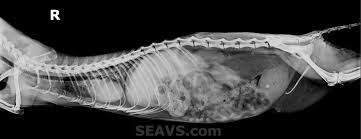Gastrointestinal problemes ferret

PLAQUE – cremor dentalis
Introduction:
Plaque is a very common problem of the carnivore animals. The alkaline mouth ph and the bacteria flora of the mouth is definitely favourable for fur forming on the surface of the teeth, then the plaque.
Symptoms:
Not just oral hygienic problems, but gum inflammation is caused by the plaque, and the causative agents which get into the blood circulation along the inflamed gum, may even get to the further organs.
The first symptom of the gum inflammation is redness of the gums rim which bleeds easily. In case of acute gum inflammation, irreversible ulathopy may develop. The teeth may loosen due to the plaque.
The bacteria getting to the blood circulation from the alveolic inflammation often cause inflammation on the heart valves, which may lead to heart valve insuffiency. Inflamed plexus in the kidneys, liver or in other organs may occur.
Prevention, treatment:
Prevention is very important! The smaller dog breeds are more susceptible to have plaque, so the prevention should be started in the puppy age. At first, it is sufficient to have the puppy let us touch its mouth or teeth. There are more ways to defend against plaque forming, but the most important one is the mechanical tooth-cleaning, toth-brushing. There are plaque-forming reducer nutrition supplements. Some kinds of dry foods are good against plaque. Chewing tapes can also be used.
If our pet is succeptible for having plaque, it can only be detained, and not totally prevented. Some animals let the mild type of plaque be picked from their teeth while they are awake, but proper plaque removal is only possible with ultrasound depuration, which is only tolerated by animals while they are drugged. Besides ultrasound plaque removal, local treatment of gum inflammation and antibiotics are often necessary. In some cases, the treatment of diseases in further organs is needed.
Gum overgrowth (Epulis)
Introduction:
Overgrowth of the gum is a benign process. It is a common problem in short nosed breeds.
Symptoms:
At first, it is an aesthetic problem, then the food leftovers stay in the areas under the overgrowth which causes bad breath and gum inflammation, plaque may evolve from the permanent fur. Not rarely, the epulis leans on the tooth, causing chewing problems, one-sided chewing and when the animal bites on the epulis, it causes bleeding. In extreme cases, the epulis may grow totally on the tooth.
Gut inflammation (ENTERITIS)
Introduction:
Gut inflammation can evolve due to many reasons. It may be caused by infectiong agent (bacteria, virus, parasite, fungus), spoiled food, toxic material (e.g. chemicals, drugs which irritate the gut mucosa) or food intolerance.
Symptoms:
Symptoms are the following: liquid faeces, possibly loss of housetrainedness, vomiting. In case of colon inflammation, mostly pappy, soft faeces can be notices.
Diagnosis:
Usually, a diagnosis can be made according to the anamnesis, symptoms, physical examination; but sometimes stool-examination or abdominal ultrasound test is needed to get the exact diagnosis.
Treatment:
In all cases, fasting, tea, diet and causal treatment (pl. antibiotics), possibly probiotics. In severe cases, if the patient has lost a big amount of liquids with diarrhea or vomiting, an infusion may be needed.
Gut-flora shifting (DYSBIOSIS)
Introduction
The gut flora of animals adjusts to their nutrition, and normally, if the composition of their food does not change, the bacteria in the guts mould balance and help the proper digestion. In case of sudden food change, or under the effects of medicines affecting gut bacteria (e.g. antibiotics), the balance of the gut flora may turn over, dysbiosis happens.
Symptoms:
Mild or diarrheic stool, absorption disorders, lack of vitamins, weight loss.
Diagnosis:
It can be stated with stool tests whether the symptoms are caused by bacteria or the difference of the normal gut flora.
Treatment:
Probiotics, diet, perhaps vitamin supplement.
GUT DISCLOSURE (ILEUS)
Introduction:
The most common reason of ileus is swallowing objects, which can block the gut cavity. Less common is the gut obliterated by disease processes starting from the gut wall, mostly gut tumour may block the gut cavity. Rarely, other problems of the stomach cavity may compress the gut cavity from outside, causing ileus.
Symptoms:
The typical symptom of total ileus is vomiting. The closer the obliteration to the stomach is, the heavier the vomiting is. After a few time, there is no stool. Lack of appetite, abdominal pain, abdominal cramps, gassy guts, ever bigger stomach, deteriorative condition, dejectedness is common. If the obliteration is not complete, namely something partially blocks the gut cavity, the symptoms are less visible, for example vomiting, slow weight loss, bad appetite, smaller amount of stool may be noticed.
Diagnosis:
If ileus is suspected, fast and exact diagnosis is very important for which profound physical examination followed by contrasty X-ray and abdominal ultrasound test are essential.
Treatment:
Usually, surgery is necessary as soon as possible (cutting or sometimes excising), and later conservative post-treatment.
